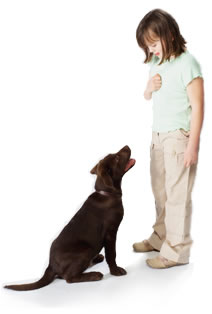CHEWINGDogs chew for many reasons. Puppies explore with their mouths. Everything and anything will go in. When they begin teething, chewing eases discomfort and helps puppy teeth work their way out. Adults chew for fun, to alleviate boredom, because it feels good. Chewing is natural and to be expected. Your job it to teach your dog to chew only appropriate items.

Make certain you use items approved for dog use. Make certain the items you give your puppy or dog to chew are sturdy and will not be ingested rapidly. Rawhide flips and chips, cow/pigs ears (I give these occasionally as treats but not as regular chews), latex toys (the cute squeaky newspapers and such) are not the best choices. They can be eaten fast, offer no nutritional value and do not give a long lasting, satisfying chew. Some squeaky toys have squeakers that may pull out and choke a puppy. Some dogs are fine with the rolled rawhide bones (also called knotted bones) and retriever rolls (rawhide rolled into rolls with no knots at the end). It all depends on how aggressively your dog chews. Old shoes, socks, old stuffed animals are also a bad choice. Your dog will not know the difference between your $180 running shoes and that old tennis shoe you gave him. Children's toys will not hold up to a vigorous chewer. Plus, button eyes and noses can be eaten and cause choking or obstruction. I keep all my dog toys in a specific box. The dogs learn that if something is in the box or came from the box it may be played with.
I use pressed rawhide bones (the rawhide is compressed under high pressure into a sturdy bone), the sterilized bones made for dogs (watch Puppy, I have one dog that can break off chunks of these bones so I never let him have one unattended) and rope toys. I also use the fleece chew men (other shapes available) made specifically for dogs. Know your dog and watch how he reacts to various chew toys. Should he shatter a bone or shred a fleece toy, you may wish to change to a different chew or try a different bone or fleece toy. Sometimes, there may be a weakness you did not see. Not every toy is safe for every dog! Choose toys appropriately sized for your dog. I would never think of using a four-inch bone with my Australian Shepherd-Newfoundland cross. It is just too small and he could choke. However, that giant, four-foot rawhide bone may dwarf my Sheltie's mouth!
Get a variety of toys and rotate every day or two so there are always "new" toys out. This way, Puppy has a variety of toys and you do not have to buy dozens of toys to keep Puppy entertained.
Should you see Puppy chewing something inappropriate, use a loud, firm, growly "NO! LEAVE IT!" and take the item away. Now IMMEDIATELY get a good chew and encourage Puppy to take it. Once he does praise lavishly. Remember, you must catch Puppy in the act so the correction will be effective. A good thing to have on hand is one of the no chewing products. There are a variety of sprays and ointments to deter chewing. Find one your puppy really hates and spray items if necessary. Do not spray it directly into Puppy's mouth. That is cruel. Follow the directions on the product.
Teaching appropriate items to chew can save a life. Puppies will chew electrical cords, bottles of poison, plants, objects that can cause intestinal obstructions. They have to learn what is good and bad. The safest things are prevention. Keep poisons out of reach. Hide cords (some home improvement places even carry cord cover as do places that sell baby proofing items) and check to see if your plants are nontoxic. Many garden centers have lists of toxic plants. Basically, puppy-proof (and doggy-proof) as if you had a precocious
toddler around! It is far better to prevent an incident than to treat one!
Should you think Puppy ingested a poison or ate something that could either cause a blockage or intestinal damage (pins, needles, nails, nylons, fishing line, coins, rocks, antifreeze, household cleaners, plants, etc.) call your vet immediately.
PUPPY BITING
It is never a good idea to let Puppy play with your hands or feet - no matter how cute it seems. This teaches Puppy it is OK to bite skin. Even though tiny puppies playing tug-of-war with your big finger is cute, it is teaching a very bad habit! Never let a puppy do something once that you do not want him to repeat. It is far easier to prevent bad habits from developing that it is to retrain an older puppy or adult dog. Here are two techniques to teach puppy not bite. Technique #1 is less physical and I recommend it first. It may take a few days or so for puppy to catch on. Technique #2 involves physically stopping puppy. Some puppies (or dogs) may actually perceive this as a challenge to try again so I do not
recommend it is as much.
Technique #1 - yelp and walk away:Puppies are very social creatures and refusing to engage in play can be an effective training technique. As soon as puppy starts to bite or nip, give a loud, yelping OUCH!!! Glare at the pup, get up and move away. After a minute or so, get a toy and return to puppy. Encourage the puppy to play with the toy. If he goes for you with a nip, repeat yelping and walking away.
Technique #2 - shake can:If puppy does not respond to a verbal command only, try a shake can. Get an empty and clean soda can and place about 10 pennies in it. Tape the mouth shut. When your pup starts to nip, give the verbal command and at the same time give the can a good shake or drop it next to puppy (not on him please). This will help reinforce the verbal command. As soon as he stops, praise and give him a good toy to chew.
Technique #3 - shake down:If Techniques 1 and 2 fail, then try this. I am not as fond of it as it involves physically grabbing the pup for reinforcing the "No Bite!". Start with a loud yelping OUCH; at the same time as you grasp the loose skin on puppy's neck. Give a firm scruff but not a shake and firmly say "NO BITE!" Do not pull puppy up and away, just scruff him. Release puppy and get him involved with a good toy. After a while, stop the scruff and just use the verbal.
Play Initiated NippingCertain games encourage biting and should be avoided when working on "No Bite": tug-of-war (my dogs are not allowed to play this with humans until they are well aware of the "pack hierarchy" and will release the toy when told to.); chase and tackle games; and other games where you actively encourage the puppy to bite a person. Dangling treats and encouraging a puppy to jump for then can encourage snapping for food as well as injure growing joints. If you play tug-of-war make certain YOU start the game and YOU stop it. If puppy brings you a toy and encourages you to play, reverse the rules (see NILIF below).
Nothing in Life is Free:It is also a good idea to get your puppy used to working for things - even play time. Before you feed puppy, have him sit and then feed. Do the same before leashing up for a walk. If the puppy brings a toy and asks you to play, turn tables and do a bit of training then play. Puppy learns that if he listens and obeys and does something, there will be a reward. This also helps establish humans as higher in the pack order.
Should your dog continue to bite and not respond or if the biting is accompanied with aggression, growling or anything you do not like, contact a behaviorist. Also, have your dog examined by a vet. There could be an underlying factor for the biting. A dog that is sore or not feeling well may bite. It is his way of saying something is not right. Also, a poorly socialized or scared dog is more prone to bite, as is a startled one. Teach your children NEVER EVER touch a dog, even one they know, without the owner's permission. Teach them never to handle a stray or loose animal, even if they know it. Children should contact a grown-up instead. Teach children not to tease or hurt dogs. Even the most tolerant dog can be pushed past his limit and retaliate. Even if the children are plainly at fault, it will be the dog that suffers. Prevention is the key.
 him or her to do or not do what you want. For instance, if your bulldog understands that you will give him or her a cookie if he or she performs a trick, he or she is more likely to cooperate to get his or her price.
him or her to do or not do what you want. For instance, if your bulldog understands that you will give him or her a cookie if he or she performs a trick, he or she is more likely to cooperate to get his or her price. and a water dish with strait side and flat bottom. Makes sure that you get a food dish made of steel and not made of plastic. The downside of the plastic food dish is that the bulldog pup may place with it and chew on it. Since plastic can easily be shredded into pieces in the mouth of your puppy, your puppy could be in great danger of swallowing some pieces of plastic. Plastic can irritate the stomach and the intestine of your bulldog puppy and could really make it sick so avoid plastic the plastic food dish. Another thing that you should never forget is the wire crate where you can keep your bulldog puppy when traveling. Note that bulldog puppies are very sensitive to heat and stuffiness so you should always use a wire crate to keep it properly ventilated.
and a water dish with strait side and flat bottom. Makes sure that you get a food dish made of steel and not made of plastic. The downside of the plastic food dish is that the bulldog pup may place with it and chew on it. Since plastic can easily be shredded into pieces in the mouth of your puppy, your puppy could be in great danger of swallowing some pieces of plastic. Plastic can irritate the stomach and the intestine of your bulldog puppy and could really make it sick so avoid plastic the plastic food dish. Another thing that you should never forget is the wire crate where you can keep your bulldog puppy when traveling. Note that bulldog puppies are very sensitive to heat and stuffiness so you should always use a wire crate to keep it properly ventilated. Children usually love puppies and they tend to be overly excited about having something and someone to play with that they would tend to pester the puppy a lot. To give your bulldog puppy sometime to recover from being separated from its family, you should explain to the kids that the puppy is just like a baby that needs rest and should be taken care of very well. You must explain to your kids that the puppy just got to your home and it still need some time to adjust. If the kids must play with your bulldog pup, they should do so in moderation so that the bulldog puppy will who get exhausted. You should always remind the kids that the puppy needs a lot of rest and cuddling.
Children usually love puppies and they tend to be overly excited about having something and someone to play with that they would tend to pester the puppy a lot. To give your bulldog puppy sometime to recover from being separated from its family, you should explain to the kids that the puppy is just like a baby that needs rest and should be taken care of very well. You must explain to your kids that the puppy just got to your home and it still need some time to adjust. If the kids must play with your bulldog pup, they should do so in moderation so that the bulldog puppy will who get exhausted. You should always remind the kids that the puppy needs a lot of rest and cuddling.


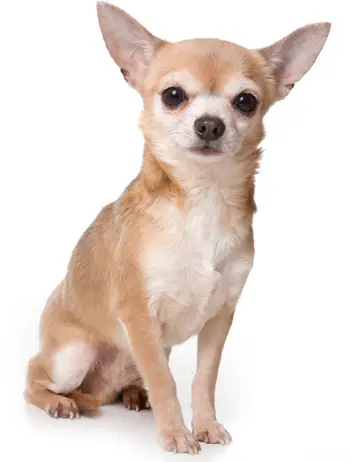



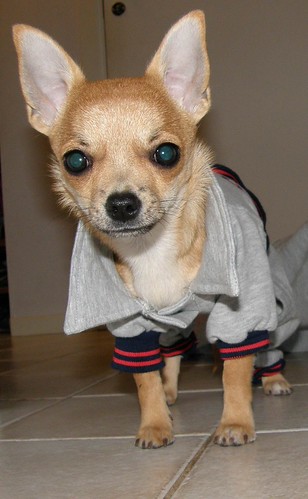 opposite, you are in big trouble because your chihuahua puppy will do whatever he wants, whenever he wants. Chihuahua puppy training tips become handy in this situation because it will help you to teach your puppy proper behaviour and it will put you in the right position.
opposite, you are in big trouble because your chihuahua puppy will do whatever he wants, whenever he wants. Chihuahua puppy training tips become handy in this situation because it will help you to teach your puppy proper behaviour and it will put you in the right position.
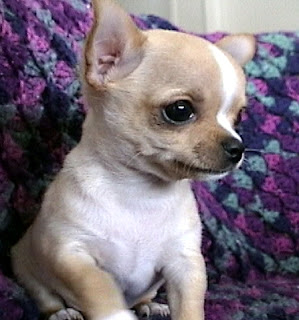
 the base of the neck where it joins the main body trunk.
the base of the neck where it joins the main body trunk.

 there are plenty of reasons why you should think about buying your dog some toys.
there are plenty of reasons why you should think about buying your dog some toys. hypoallergenic, and are a very healthy breed. When buying dogs like the Havanese (or any other breed really) a person should make sure that the breed is right for him or her and the person’s family. Adopting or buying dog is a long commitment that should not be taken lightly. Remember, when a person is getting a dog, they are getting a new family member. If a person is thinking about getting a new dog for his or her family, that person may wish to consider the small dog breed called the Havanese dog. This is a dog that originates from breeding in Cuba, and has been made somewhat more famous due to celebrities such as Barbara Walters owning them. This is a very varied type of dog. Havanese dogs may come in many different fur types and colors. In fact, very few colors and fur types and combinations will exclude them from being shown.
hypoallergenic, and are a very healthy breed. When buying dogs like the Havanese (or any other breed really) a person should make sure that the breed is right for him or her and the person’s family. Adopting or buying dog is a long commitment that should not be taken lightly. Remember, when a person is getting a dog, they are getting a new family member. If a person is thinking about getting a new dog for his or her family, that person may wish to consider the small dog breed called the Havanese dog. This is a dog that originates from breeding in Cuba, and has been made somewhat more famous due to celebrities such as Barbara Walters owning them. This is a very varied type of dog. Havanese dogs may come in many different fur types and colors. In fact, very few colors and fur types and combinations will exclude them from being shown. 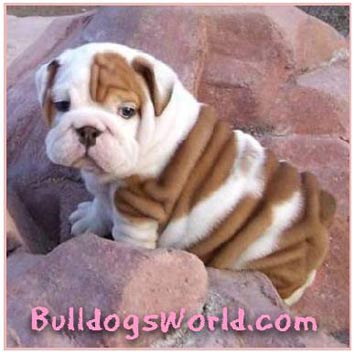 Bull dog is unlike any other dog.They are so expressive.If one looks into their eyes one can almost see what they are thinking.Their growing popularuty with celebrities have added to their publicity.The breed is the second most popular dog in Los Angeles.
Bull dog is unlike any other dog.They are so expressive.If one looks into their eyes one can almost see what they are thinking.Their growing popularuty with celebrities have added to their publicity.The breed is the second most popular dog in Los Angeles.  hand,an American bull dog is a breed of working dog developed for catching livestock and for protecting property. Though larger in size, they are the closest surviving relative of the old English bulldog. There are generally considered to be two types of American bulldog, the johnson type and the Scott type, named after the breeders who were influential in developing them, John D. Johnson and Allen Scott. These are more commonly known as Classic or Bully type and Standard or Performance type.The American Bulldog is a stocky, strong-looking dog. Its coat is short and either white or white with patches.
hand,an American bull dog is a breed of working dog developed for catching livestock and for protecting property. Though larger in size, they are the closest surviving relative of the old English bulldog. There are generally considered to be two types of American bulldog, the johnson type and the Scott type, named after the breeders who were influential in developing them, John D. Johnson and Allen Scott. These are more commonly known as Classic or Bully type and Standard or Performance type.The American Bulldog is a stocky, strong-looking dog. Its coat is short and either white or white with patches. 

 The type of collar you should get for your Chihuahua puppy is simply a standard buckle collar. These collars are fastened with a buckle (you can get a quick release plastic buckle for convenience), they are made of leather, nylon or cotton and the collar itself can be either flat or round. These types of collars are adjustable and won't tighten on your Chi puppies neck when they are fastened. You will need size: extra small :-)
The type of collar you should get for your Chihuahua puppy is simply a standard buckle collar. These collars are fastened with a buckle (you can get a quick release plastic buckle for convenience), they are made of leather, nylon or cotton and the collar itself can be either flat or round. These types of collars are adjustable and won't tighten on your Chi puppies neck when they are fastened. You will need size: extra small :-) enforced your dog learns that commands are optional.
enforced your dog learns that commands are optional. allow the dog to associate these words or motions with what he is supposed to do. Practise, practise and practise.
allow the dog to associate these words or motions with what he is supposed to do. Practise, practise and practise. would remove 100% the smell hasn’t been easy.
would remove 100% the smell hasn’t been easy. a loud noise, such as 'no', to get his attention, then remove whatever it is that he's chewing on. Promptly replace it with an appropriate toy for him to chew on and reward him when he does.
a loud noise, such as 'no', to get his attention, then remove whatever it is that he's chewing on. Promptly replace it with an appropriate toy for him to chew on and reward him when he does.  appropriate for them to chew on and those things that aren't.
appropriate for them to chew on and those things that aren't. 

 especially if your dog suffers from bad joints, hips or one of many skin conditions affecting pets from all walks of life. A cooling pet bed doesn't have to be expensive either, and can be used all year around, especially in those hot summer months.
especially if your dog suffers from bad joints, hips or one of many skin conditions affecting pets from all walks of life. A cooling pet bed doesn't have to be expensive either, and can be used all year around, especially in those hot summer months.
